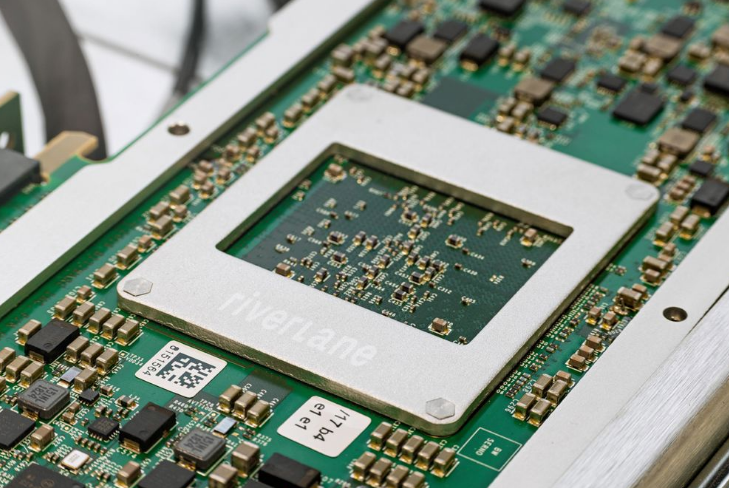Insider Brief
- The Financial Times showed that the reliability of GPS (Global Positioning System) has been increasingly compromised by intentional interference.
- Meanwhile, an academic-government-commercial partnership showed that recent advancements in quantum technology could lead to un-jammable communications.
- There are still challenges and work to do, but this recent quantum navigation demonstration shows that solutions may be nearing.
In a case of journalistic synchronicity, two stories appeared in the press today — and they were deeply, if coincidentally connected.
In an excellent piece in the Financial Times, the reporters offered evidence that in recent years, the reliability of GPS (Global Positioning System) has been increasingly compromised by intentional interference. The surge in GPS jamming and spoofing, particularly in regions with heightened military activity, has caused significant disruptions to civilian life and essential services.
Jamming is the deliberate disruption of GPS signals by overwhelming them with noise, while spoofing is the transmission of false GPS signals to mislead receivers about their true location.

However, recent advancements in quantum technology — such as the ones demonstrated in the UK detailed in this story — could lead to un-jammable communications, making it a promising solution to this growing problem.
The GPS Crisis
GPS has become an integral part of modern life, providing essential services for navigation and timing with use cases across fields and industries, including aviation, shipping, banking and emergency services, according to FT. However, a wave of deliberate signal interference examples have demonstrated the system’s vulnerabilities.
The FT reports that GPS jamming and spoofing, historically used by militaries to protect sensitive sites and mask activities, are now increasingly affecting civilian populations. For instance, since Russia’s full-scale invasion of Ukraine and Israel’s recent offensive against Hamas in Gaza, the manipulation of GPS signals has expanded dramatically. This has led to bizarre and potentially dangerous situations: ships appearing to sail over land, flights forced to turn around mid-air due to navigation failures and disruptions in essential services like ride-sharing and food delivery apps.
Data from Flightradar24 analyzed by the Financial Times revealed that almost 40 million people lived in areas with unreliable GPS signals for at least half of the past six months. Areas with the highest levels of interference include Turkey’s capital Ankara, stretches of the Black Sea coastline, Egypt’s Sinai Peninsula, several major Iraqi cities and war-torn regions in Myanmar. In some cities with significant military facilities, such as St. Petersburg in Russia and Lahore in Pakistan, strong interference has become a common occurrence.
These disruptions are not just a nuisance; they pose serious risks, the FT reports. For example, the Pentagon’s “Harmonious Rook” project aims to create a comprehensive map of GPS interference, acknowledging it as a significant global concern. The increased frequency of jamming incidents over major cities has led to alarming situations where pilots, confused by their location, have to request turn-by-turn directions from air traffic control.
The Quantum Solution
Amid these challenges, quantum technology does offer solutions. In a related story, the UK successfully completed commercial flight trials of advanced quantum-based navigation systems that are immune to jamming and spoofing. These groundbreaking systems promise to revolutionize Positioning, Navigation, and Timing (PNT) by offering highly accurate and resilient alternatives to traditional satellite-based navigation.
Infleqtion, one of the leaders in this type of quantum technology, in collaboration with aerospace companies BAE Systems and QinetiQ, recently completed a series of test flights showcasing two innovative quantum technologies that could ease dependence on GPS: the compact Tiqker optical atomic clock and a confined ultra-cold-atom-based quantum system. Both technologies were tested aboard QinetiQ’s RJ100 Airborne Technology Demonstrator.
The heart of this new navigation system is the Quantum Inertial Navigation System (Q-INS), which leverages the exceptional accuracy of quantum accelerometers and gyroscopes. These devices use ultracold atoms—cooled to temperatures near absolute zero—to measure motion with unprecedented precision. Unlike GPS, which relies on satellite signals that can be jammed or spoofed, Q-INS operates independently, making it highly resilient to interference.
The UK government has heavily invested in this technology, contributing nearly £8 million to the project. This funding is part of the broader £2.5 billion National Quantum Strategy, aimed at establishing the UK as a leader in quantum-enabled technologies. Science Minister Andrew Griffith emphasized the potential impact of this research, stating that it could provide the resilience needed to protect critical navigation systems from disruption.
Obviously, this is just a first steps and challenges remain. For example, developing quantum navigation systems that are small, portable and affordable enough for commercial use will be a significant challenge. These technologies typically require precise conditions, such as extremely low temperatures, which can be difficult to maintain outside of a lab environment.
There is also cost — this equipment is expensive — and the very complexity of the devices would require advanced knowledge to build, maintain, and operate. Last — but certainly not least — work will need to done to make quantum navigation both robust and reliable for real-world uses.
The good thing is, researchers are much farther along than many experts anticipated. Quantum navigation is still a relatively new field, and ongoing research can help address these challenges. This R and D could lead to more efficient quantum sensors, improving error correction methods, and finding ways to mass-produce these systems.


















